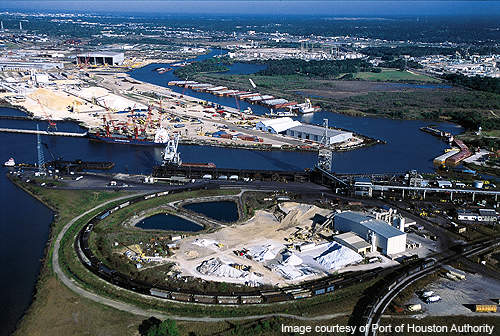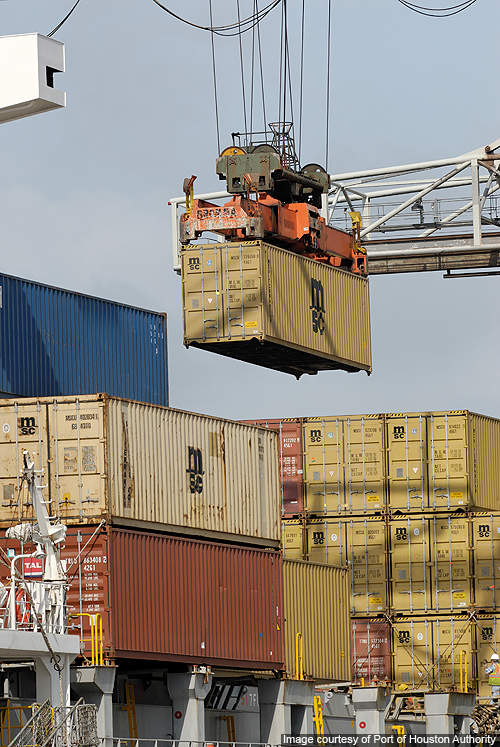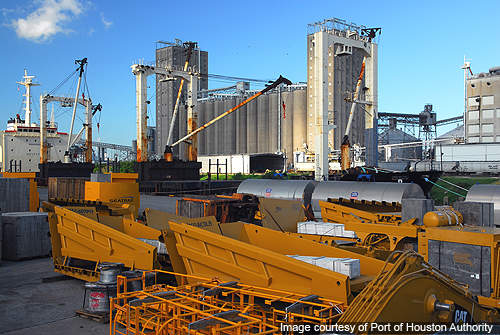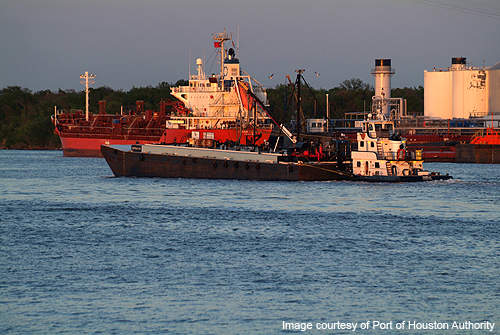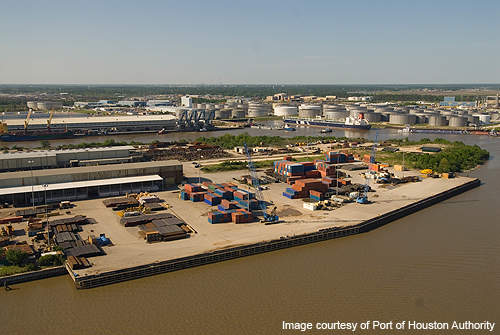The Port of Houston is located on the coast of the Gulf of Mexico. The port is about 500km away from the Port of New Orleans, and 190 nautical miles from the Port of Corpus Christi.
The Houston port is the tenth largest in the world and the second busiest in the US. The port has consecutively ranked first in the country for 14 years in terms of foreign tonnage.
Port operator
The Port of Houston is owned and operated by the Port of Houston Authority. It is a sovereign government entity, authorised by an Act of the Texas Legislature in 1927. The port was originally approved as the Harris County Houston Ship Channel Navigation District by the voters of Harris County in 1909. The name, however, was changed to the Port of Houston Authority in 1971 by the Texas Legislature. The newly created authority was also given extra power for fire and safety protection on the 50 mile Houston Ship Channel.
A seven-member commission governs the Authority. Of the seven members, two each are appointed by the City of Houston and the Harris County Commissioners Court, and one each by the Harris County Mayors and Councils Association, and the City of Pasadena. The chairman of the commission is jointly appointed by the City of Houston and the Harris County Commissioners Court. There is also an executive director to supervise the daily operations.
Throughput
The Port of Houston plays a major role in the development of the city of Houston. The port witnesses over 7,800 vessel calls every year.
The port handled 1m TEU in the first seven months of 2010. The port’s container tonnage grew by 8% from the same period in 2009.
In 2009, over 220m tons of cargo passed through the port. It also recorded over 7,700 vessel calls during the year. In 2008, the port handled 1.8m TEUs.
The same year, more than eight thousand ships carrying 225.5m tons of cargo called the port.
Cereal and cereal products, natural stone, iron and steel, petroleum and petroleum products, and organic chemicals are the primary cargoes handled by the port.
Construction
The Port of Houston was furnished with its first dock in the year 1840; the rail-road came in 1853. The Houston Ship Channel, which is a part of the port, was officially opened to traffic by the then US President Woodrow Wilson in 1914. The port’s Barbours Cut Terminal, which was also the first cargo container terminal in Texas, was opened in 1977. A new terminal, Bayport Terminal was opened in 2006.
Port facilities
The Port of Houston is well connected through interstate highways and rail connections, allowing it to access inland markets. The port is connected to the continental US, Mexico and Canada through two major rail-roads and about 150 trucking lines.
The port owns two liquid-cargo wharves and 43 general cargo wharves available for public hire.
The Turning Basin Terminal, located 13km from down-town Houston, is the navigational head of the Houston Ship Channel. The terminal has a quay length of 806ft and can accommodate vessels with maximum length of 750ft. The terminal offers covered storage space of 1.9m square feet and open storage space of 3.3m square feet.
Located within the Turning Basin Terminal, Wharf 32 has facilities for heavy-lift cargo. The state-of-the-art freight handling facility worth $10.8m has a load capacity of 1,000lb/ft². It has a paved marshalling area of 20 acres and also provides 806 linear feet of berthing space.
The Woodhouse Terminal is located 3.2km downstream from the Turning Basin. The facility offers about ten acres of open storage, 235,000ft² of warehouse space, and roll-on / roll-off ramps. It has three general cargo wharves with lengths ranging between 600ft and 660ft.
The port’s dry bulk export / import facility, Bulk Materials Handling Plant is located 14.5km downstream from the Turning Basin Terminal. The plant’s ship-loading system is can handle any kind of dry bulk commodity. The rated capacity of this loading system is 1,800 short tons per hour.
The modern wharf and dock facilities of the Care Terminal allow it to accommodate heavy-lift and project cargo of up to 1,000lb/ft². The terminal provides 1,100ft of berthing space, 15 acres of paved open storage area, and 45,900ft² of warehouse space.
The Jacintoport Terminal on 125 acres provides waterfront refrigerated and frozen storage facility. The terminal is equipped with bagged cargo handling system that can load vessels at a high speed. There is also a temperature- and humidity-controlled storage facility, built over an area of 200,000ft².
The Barbours Cut Container Terminal is the largest container terminal on the US Gulf Coast. Much of the container activity at the port takes place at this terminal.
The terminal’s six berths provide 6,000ft of continuous quay. Facilities provided by the terminal include a LASH dock, roll-on / roll-off platform, paved marshalling area, an on-site rail ramp, and two 100,000ft² transit sheds. It also has 13 wharf cranes and computerised inventory control system.
The Port of Houston’s Bayport Container Terminal is a $1.2bn facility. The Bayport Cruise Terminal has been built a cost of $81m and serves world-class cruise lines.
Developed by the Port of Houston Authority in an alliance with Friendswood Development Corporation, the Bayport Terminal Complex offers chemical and chemical specialty facilities. It is used by over 70 US and foreign companies.
Port Security
The lead agency involved in regulating the security of vessels and maritime facilities and protecting the port’s waterways is the US Coast Guard. US Customs and Border Protection is responsible for providing cargo security and carrying out cargo screening for potential hazards.

